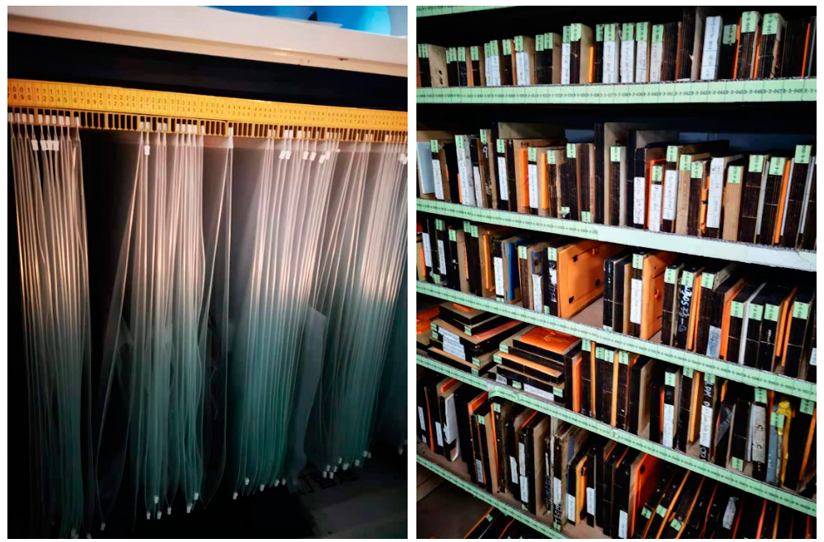The mold of the Membrane Switch consists of these parts: Digital printing tooling, Silk Printing Tooling, Die-cut mold, hardware mold, engraving mold, and etching mold. Different mold combinations will cause different results to the final product of the Membrane Switch. The results include size error, Tactile Feedback, shape requirements, silk screen effect, and Embossing height.

For mass production, Digital Printing is a good choice, if the color error is small. At the same time, the cost is lower than Silk Printing.
Products that need to use gradient colors
Products whose line thickness is less than 0.1mm or cannot be printed by conventional Silk Printing can be color printed
The color error is small, one of the most commonly used printing methods.
Suitable for small batch production and relatively low cost.
About Membrane Switch printing terms:
The film production of membrane switch products. The work content is relatively cumbersome and requires a certain degree of work experience and strong technical ability. It mainly includes two parts: color separation and color pressure.
Color separation: Membrane switch products are usually silk-printed on the back of the panel material (glossy surface), and because of the silk-screen ink (light color cannot cover the dark color), there are certain requirements for the order of printing colors. First arrange according to the colors shown in the renderings, from dark to light. When encountering a close color (medium or light), you need to refer to the color card to separate the relative shades. In another case, regardless of the color depth, silk screen printing is required first. Two colors and more than two colors have fonts, lines, patterns, etc. on the surface. The colors of fonts, lines, and patterns must be printed first, otherwise, it will be deformed. The drawing does not match. Silicone panels and special products are silk-printed on the surface of the material, and the color separation sequence is just the opposite of the above content, in the order from lighter to darker.
Color pressure: The so-called color pressure is the place where two colors intersect. The later-printed color extends over the first-printed color at the intersecting place, so as to avoid register deviation (inevitably) causing the intersecting area to be hollowed out. Usually, the color extension is 0.3mm, and the minimum is 0.2mm. Due to the characteristics of the screen and ink, the thinnest content needs to be 0.2mm to avoid jagged and unclear after screen printing.
At the same time, Niceone-Keypad purchased automated printing machines in order to shorten the production lead time. In mass production, automated printing equipment can shorten the lead time by 2 weeks or more.
The influence of die-cut mold, hardware mold, engraving mold, and etching mold on Membrane Switch.
Mold selection for membrane switch products. Membrane switch products usually have a thickness within 2.0mm, and there are four commonly used molds: knife molds, hardware molds, engraving molds, and etching molds.
Die-cut mold is the most commonly used, with low cost, molds cannot be repaired, and waste cannot be discharged during punching. It is suitable for products with a total thickness of 1mm and dimensional tolerance of ±0.2mm.
The cost of hardware molds is relatively high, and they cannot be punched with soft materials (such as silica gel), but they have a long service life, up to 1 million times. The mold can be repaired 5 times, and waste can be discharged during punching. It is suitable for products within 2.0mm, and the tolerance can be controlled within ±0.1mm. Hardware molds are recommended for products with strict size requirements and large quantities. At the same time, the hardware mold is very important for the convex Membrane Switch without shrapnel. Because hardware molds will make Tactile Feedback even better.
The cost of the etching mold is twice that of the Die-cut mold, the service life is low, the maximum is 30,000 times, the mold cannot be repaired, and the waste can be discharged during punching. It is suitable for products with a thickness of 1.0mm, and the tolerance can be controlled within ±0.1mm.
The cost of the engraving mold is half of the cost of the etching mold, the service life can reach 50,000 times, the mold can be repaired 3 times, and the waste can be discharged during punching. It is suitable for products with a thickness of 1.5mm, and the tolerance can be controlled within ±0.1mm. Due to cost and practical considerations, this type of mold is not recommended.
Die Cut molds, etching molds and engraving molds are easy to rust if they are not used for 4 years, and must be scrapped if they are not used for more than 4 years.
The thickness of single-layer materials in the product is 0.5mm and above (except for foam glue), and hardware die punching is required, and other types of die punching will be deformed.
How to choose the most suitable mold to produce a membrane keypad?
Choose according to product needs, performance, cost, and practicality. You can contact professional membrane keypad manufacturer Niceone-Keypad, and the professional team will give you the most suitable answer about the China PCB membrane switch, within 24 hours.